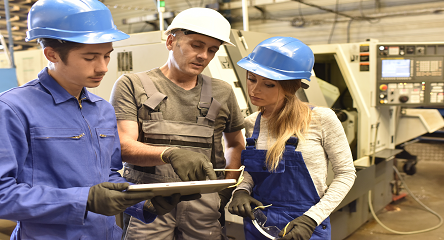
It’s been estimated that over one in five workers will be eligible to retire in the coming 10 years, with some 19 million people older than 55 and eligible. Replacing all that experience, particularly skilled craft people such as mechanics, electricians, electronic technicians, etc., will be difficult.
My experience has been that most companies are “dabbling” in addressing this potentially serious problem. They have plans, and yes, to some extent these plans are being implemented. However, the current economic uncertainty is hindering even the best efforts. Most companies can’t find the skilled trades they need, especially post-pandemic, and many CEO’s are still reluctant to hire (or re-hire) people given the current economic uncertainty. Likewise, many CEO’s are unwilling to commit large amounts of capital and human resources to training programs, facilities and supporting institutions to address the problem at hand.
We will discuss possible means for managing this pending shortfall in skilled workers including:
1) reinvigorating a moribund apprenticeship program;
2) working with local trade schools and community colleges to develop skilled workers;
3) re-hiring retirees either part-time or full-time who want to come back to work on a contract basis; and
4) more intensive internal training programs.
5) enhanced productivity through better reliability and higher OEE, e.g., going from 60% to 80%, to produce more with the same number of people.
Finally, other mitigating factors are also at play. First, manufacturing productivity and automation has been steadily increasing over the past 40 years. Manufacturing is now only 12% of GDP, whereas some 40 years ago it was about 30%. Second, only about half of the workforce that could retire will actually be able to do that, given their financial circumstances. For many, you can only fish or golf so much before it too becomes boring and you’re looking for a new opportunity.
We hope you enjoy this episode!






